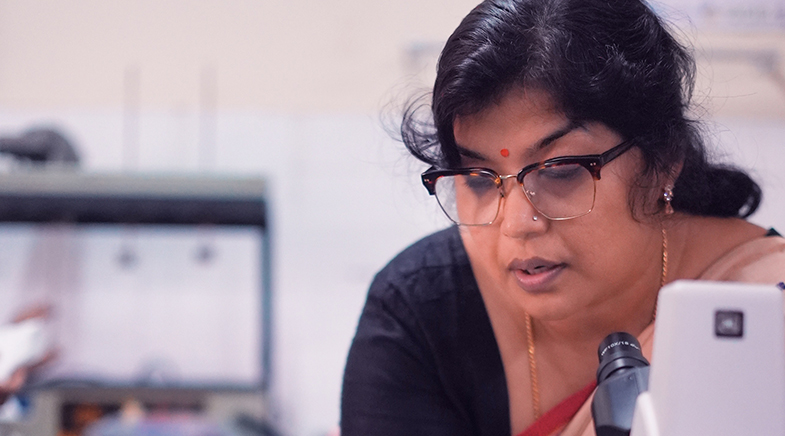Wonder water
-
- from Shaastra :: vol 02 issue 05 :: Sep - Oct 2023

Plasma-activated water can kill harmful microbes and aid in faster growth of crops.
Over water in a finger bowl-like container, Lakshminarayana Rao fixes a stainless steel rod, connects both to a high-voltage power source and thunders a flash of five-millimetre-long plasma arc, striking a lightning on water that is not long enough to generate a thunderstorm but strong enough to destroy pathogens.
An Associate Professor at the Centre for Sustainable Technologies, Indian Institute of Science, Bengaluru, Rao is exploring the superpowers of this 'wonder water' as a means to selectively kill cancer cells. So far, he has been successful in killing multi-drug-resistant pathogens with his 'pin to water' spark discharge experimental set-up.
Lightning consists of plasma, the fourth state of matter – a soup of ions, electrons and energetic neutrals. "It was observed in nature that crops grow much better wherever lightning strikes," says Sudhir Kumar Nema, Professor at the Homi Bhabha National Institute in Mumbai and Scientific Officer-H at the Facilitation Centre for Industrial Plasma Technologies, Institute for Plasma Research (IPR), Gandhinagar.
"Later, it was found that plasma interaction with ambient humidity or a water source transfers many active species of nitrogen, which work as nutrients enriching the soil and boosting crop growth," Nema adds.
Rao is generating these reactive species of oxygen and nitrogen to trap them in water contained in a finger bowl. Air is composed of about 78% nitrogen and 21% oxygen. Dissociating air on water in the lab with a high-power thunderbolt produces a soup of reactive species of nitrogen and oxygen. These species can be nitrates, nitrites, ozone, peroxides, electrons, metastable states of oxygen, hydroxyl radicals, and other short-lived and long-lived combinations.
"You can produce active species by generating plasma," Nema says. Producing plasma-activated water (PAW) is just how one would produce plasma and then allow water to interact with it. "We can generate different kinds of plasmas via different electrode configurations, dielectric materials and power supplies," he adds.
Many of these species formed in the air might escape, so Rao covers the finger bowl with a lab funnel to prevent this. Rao explored if this made a difference using computational fluid dynamics simulation. He found that the funnel enclosure establishes a circulation within itself, increasing the magnitude of velocity by an order of two and preventing the species from going far from the water surface. This enhances their diffusion, as Rao observed, with an increase in concentration of the nitrite ions in water. He has patented this innovation.
PAST ISSUES - Free to Read


Have a
story idea?
Tell us.
Do you have a recent research paper or an idea for a science/technology-themed article that you'd like to tell us about?
GET IN TOUCH














